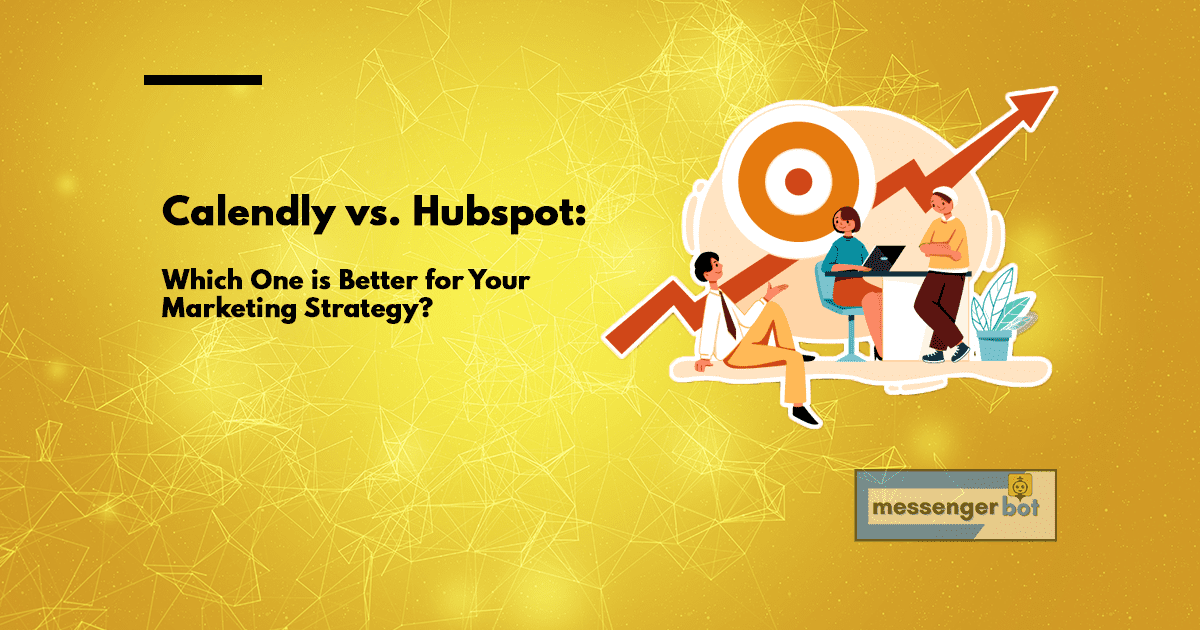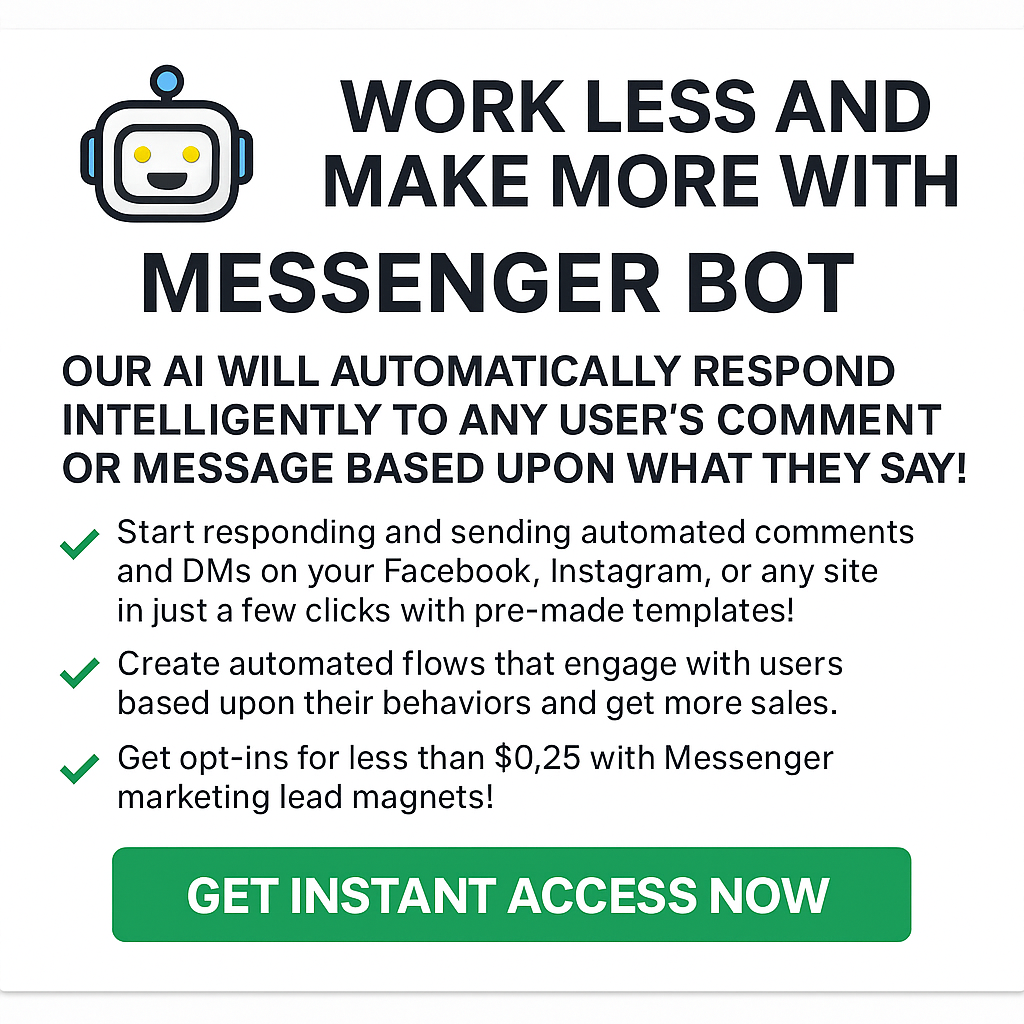如果您可以在没有来回邮件的情况下安排会议,那会怎么样?如果您可以轻松地在几次点击中将日历与其他人的日历同步,那又会怎么样?如果这些问题听起来很吸引人,那么这篇文章就是为您准备的。您可能会认为Calendly与HubSpot并没有太大区别,因为它们基本上做的是同样的事情。但别担心——我们有答案给您!

什么是预约设置软件?
预约设置软件程序用于帮助公司管理其销售、营销和客户服务功能。这些程序旨在服务于小型企业以及利用内部员工或外部机构服务的大型公司。
这些程序很重要,因为它们使公司能够专注于最重要的事情,同时允许它们最大化生产力。它们也很有帮助,因为许多这些程序与其他软件和系统集成,以便信息可以在多个平台和工作流程之间共享。
什么是Calendly?
Calendly是一个调度助手,允许您通过自动化日历安排会议或预约。您可以在网络浏览器和移动设备上找到该服务,因此您永远不会没有它。它与Google日历、Outlook Exchange Server和其他主要日历兼容,并且会自动同步——无需复杂的集成设置!
要使用Calendly,您需要创建一个免费账户并链接您的日历。然后,从屏幕左侧菜单中选择您希望与该服务同步的日历(如有需要,请为客人打开这些日历)。完成后,只需将Calendly链接复制并粘贴到您的网站上,并与潜在客户、顾客或合作伙伴分享。当他们点击该链接(可以自定义)时,他们将能够安排一个适合您双方的会议时间——而且无需交换任何额外的联系信息!
什么是HubSpot?
HubSpot是一款帮助企业成长的营销和销售软件。
HubSpot在B2C领域增长尤其迅速,但也吸引了来自金融、汽车和消费品等其他行业的公司。许多客户是通过口碑宣传他们出色的服务和产品(如电子邮件模板)而获得的。
Calendly与HubSpot的优缺点

HubSpot的优缺点
HubSpot是一款适合各类企业和组织使用的优秀营销工具。它允许您自动化创建和发送电子邮件的过程,提供一套分析工具,帮助跟踪您的营销工作表现。它还包括深入的客户服务软件,以保持与客户的所有沟通有序。
最大的问题是其价格,这可能使一些公司难以承受,尤其是对于刚起步的公司。
Calendly的优缺点
Calendly通过允许您为您的预约创建一个日历,消除了手动安排与客户预约的麻烦。它还允许您添加备用会议时间,以防您的客户在您指定的时间段内无法参加。
该服务不允许自定义品牌电子邮件,这是一个主要缺点,因为大多数公司希望通过电子邮件营销活动来推广他们的品牌并获得更多潜在客户。它也不允许自定义跟进电子邮件,而这是大多数营销策略中必不可少的功能。
比较Calendly和HubSpot:HubSpot会议与Calendly调度功能
这两个软件平台,Calendly和HubSpot会议,都是用于在线安排会议的。然而,这两种工具在使用方面有许多不同的功能,使它们彼此区分。让我们看看每个平台的功能,以帮助您决定哪个最适合您的公司。

一键设置
一键设置对您的用户有多种好处:节省时间、易于使用、客户满意度等。
设置Calendly或HubSpot账户非常简单。只需几次鼠标点击,您的调度软件就可以运行,但这两款产品提供的不仅仅是易用性。在决定这两款软件时,还有许多因素需要考虑,包括价格、功能和与Slack、MailChimp等其他服务的集成。
Calendly提供简单的一键设置。您只需输入您的电子邮件、密码和时区,然后就可以开始使用!
HubSpot并不困难,但它确实需要比Calendly的一键流程更多的步骤。您需要创建一个登录,验证您的网站域名(如果您不知道这如何操作,您可能需要使用HubSpot的免费试用),并选择您的名称(它将在联系表单中显示)。
就设置而言,Calendly更胜一筹。但HubSpot凭借其集成和适合刚起步的小企业的实惠计划仍然占据优势。

无限会议
在调度工具中,无限会议对提升营销效果至关重要。当您在等待客户或顾客回复他们是否能在您提议的日期参加时,这既耗时又令人沮丧;这导致要么重新安排,这将占用他们更多宝贵的工作时间,要么因为他们的日程已满而完全取消。
使用像Calendly这样的调度工具,您可以避免与可能无法在适合您的日期参加的客户或顾客来回沟通的麻烦,给他们提供一个在线日历,让他们自己找到可用时间。
Calendly确实具有无限会议功能,这对您的营销策略至关重要。其无限会议功能允许您与客户或顾客安排尽可能多的会议,以便于他们。
无限会议在任何调度工具中都很重要,即使它只是由一个人使用。它节省了时间和精力,因为用户不必来回寻找一个适合双方的时间。
HubSpot’s unlimited meetings feature allows you to schedule as many meetings with your client or customer that are convenient for them. This is beneficial because it saves them time and energy of having to go back and forth trying to find a time that works for both parties.
Both tools allow unlimited meetings, which is important for your marketing strategy. Calendly saves you time and HubSpot saves your client or customer’s time, so make sure to try them both out!

Reporting & Analytics
Reporting and analytics are very important in a scheduling tool. They are the metrics that show you just how well your team is performing, and what areas need to be improved upon.
Some benefits of reporting include: being able to see exactly how many appointments were scheduled, being notified when something goes wrong with an appointment (e.g., reschedule, appointment reminder not sent), and being able to see what areas your team is excelling in vs which ones need attention (e.g., the time it takes for an appointment to be scheduled).
Calendly’s reporting includes the ability to see exactly how many appointments were scheduled, reschedules, and appointment reminders that weren’t sent. It also displays information on your team’s performance (e.g., average response time for an email).
HubSpot has the following features regarding analytics: number of meetings booked per month, number of unique meeting bookers per month, number of meetings scheduled via the mobile app. It also displays info on your team’s performance (e.g., average response time for an email).
Reporting and analytics are very important when it comes to scheduling tools. Calendly is a great option for businesses who want an easy-to-use but powerful tool that provides detailed reporting and analytics about your team’s performance, while HubSpot is better suited to teams with more sophisticated needs in terms of their reporting and analytics features.

个性化
Personalization is important for your scheduling tool because it makes the process easier and more efficient.
Having a personalization feature means that you can use specific information about each of your clients to make sure that they get an appointment time that works best with their schedule. You don’t have to work around everyone’s schedules which makes the process more efficient.
Calendly has a way to set up email templates so that you can send an automatic response back to your clients as soon as they request an appointment. Calendly also has integrations with many different types of calendars and programs which makes it much easier for everyone involved in the scheduling process.
HubSpot doesn’t have this same level of personalization because there aren’t as many integrations and it doesn’t automatically send emails to your clients which means that you have to do more work.
Personalization makes the scheduling process easier for everyone involved, so why would you not want an easy way? You can check availability much faster and spend less time on managing appointments with a personalization feature.
Some people might not like that you can’t set up specific availability schedules for different clients, but if this is something that bothers you then there’s no reason why you should use a scheduling tool in the first place! Personalization makes things more efficient which means less time managing appointments.
In conclusion, Calendly has a better personalization feature than HubSpot does. This makes both scheduling appointments and managing them easier for everyone involved in the process. If you’re looking to streamline your scheduling process and make the most of your time, then you should use a personalization feature.
Localization
Localization is important for scheduling tools because not everyone speaks English.
Localization is helpful to schedule meetings with people who speak different languages, which helps ensure the best possible communication.
Calendly offers localization in 18 languages, while HubSpot offers several. Calendly allows you to choose which languages are available in your settings.
On the other hand, HubSpot offers language filtering, which is helpful to some extent.
Localization can be an issue when you first start using the product because of how it’s set up initially. However, once everything has been set up and customized for your company, Calendly offers better options than HubSpot.
HubSpot customers may choose to show all languages, but this can be difficult for the customer service team because they need to manually change it depending on who you are meeting with. HubSpot limits your options by not allowing users to select individual languages; instead, language selection is based on regions.

Teamwide Collaboration
Collaboration is important in all kinds of teams and organizations.
Teams need to collaborate on things like marketing, product development, customer service interactions with customers or prospective clients, brainstorming sessions for new initiatives, etc., so they can understand their target audience better. With a scheduling tool, it is easy for a team to ensure that everyone has their calendars synced and can see who else is available at a given point in time.
Calendly allows users to send out invitations with all kinds of options, such as only accepting bookings from people within your organization, accepting bookings outside of business hours or on weekends only and even allowing people to request a booking. These options ensure that the person making the appointment is flexible enough for you and your team, without sacrificing any work time.
Hubspot has similar features which help teams collaborate around their schedule: users can set up different schedules based on whether they are available, booked up, or down. The free version of the tool also allows users to see who else is in their workgroup and what they have on their schedule today so that teams can determine who should be contacted about making a booking together if needed.
In terms of teamwide collaboration, Calendly and Hubspot both do a great job of making it easy for teams to set up their schedules, send out invitations and determine who is available. Calendly has more options when it comes to limiting your bookings by time or location than Hubspot does, while the latter’s free version allows you to see what other members in your workgroup have on their schedule. In terms of overall features, both tools are pretty similar and even provide integrations with other apps that you may use as a business or team leader.
Shareable & Embeddable Meetings Links
Shareable meetings links are important because they allow you to promote your schedule outside of the scheduling tool. Embeddable meeting links are also great for social media use, as well as being able to post them on your blog, website, or wherever else you can think of!
这两个工具都允许您创建可分享和嵌入的链接。HubSpot 通过允许您复制链接、返回到电子邮件模板中,将链接粘贴到您希望出现的位置,然后发送,使这一过程变得特别简单!
可分享的会议链接允许那些可能不知道您日程安排工具的人仍然可以看到您何时有空。可嵌入的会议链接允许您将链接发布到任何您喜欢的地方,以便人们能够在他们的时区和他们偏好的设备上访问它。

电子邮件通知
电子邮件通知在日程安排工具中至关重要,因为这是人们接收其日程更新的方式。当他们收到电子邮件通知时,这意味着日历上发生了变化,他们需要采取行动。
电子邮件通知对于跟踪您的会议或约会的动态也非常有用,因为您可以在一个地方查看所有的变化,而不必单独检查每个日历。
大多数情况下,人们会在会议更新前至少提前 24 小时收到通知,以便他们有足够的时间准备,并在需要时寻找新的时间段。因此,即使他们现在无法使用,您也可以在他们的日历清空时与不同的客户或顾客安排约会。
Calendly 不提供电子邮件通知。然而,您可以使用 Zapier 的电子邮件通知功能,将您的 Calendly 账户与 Gmail 或 Slack 等其他应用连接,这样每当您的日程发生变化时,它将自动通过电子邮件发送。
使用 HubSpot,用户会收到关于其日历中所有更新的通知,包括新约会和取消以及会议变更。他们可以选择通过电子邮件或 Slack 接收更新,具体取决于他们的偏好。
HubSpot 的另一个重要功能是,如果对方尚未回复,系统会在活动开始前一周通知您,以便您有足够的时间寻找其他人,以防他们没有兴趣。另一方面,Calendly 没有任何自动通知功能。
电子邮件更新比聊天消息更可靠,因为它们更容易访问,您可以在需要时轻松在收件箱中找到它们。您不必麻烦地登录多个应用程序或跟踪每个应用的通知。
通过电子邮件更新,您可以在一条消息中获取有关您的日程的所有详细信息,包括变更和取消,因此无需打开多个日历或每天检查它们,以查看自昨天以来是否有任何变化。

移动与桌面使用
在选择营销自动化工具时,移动和桌面使用非常重要,因为这将决定系统的导航和使用的便捷性。
Calendly 在移动和桌面上都很简单易用,而 HubSpot 的使用则稍微复杂一些。Calendly 也是为数不多的在移动设备上完全免费的系统之一。
Calendly 的一个优势是与 Google 日历的集成,这使得添加约会或事件变得极其简单和快速。
另一方面,HubSpot 缺乏集成,并且在移动设备上使用更为困难。
在选择营销自动化工具时,移动和桌面的易用性非常重要,因为您希望您的员工或客户能够轻松无障碍地使用您的产品。
这两个工具都有其优点,但 Calendly 在移动设备上的使用更为简单,并且与 Google 日历的集成是一个巨大的优势。
Integrations
集成很重要,因为它们允许您将营销工具连接在一起。它们是有益的,因为您可以自动化您的营销工作。这意味着当一个工具将数据发送到另一个工具时,这两个工具会集成在一起,创建一个自动化工作流程。
Calendly 与 Google 应用、Dropbox、Box、Trello 和 Basecamp 进行集成。HubSpot 则与 Gmail、Evernote Business(前身为 EverNote)、Slack 和 Zendesk 等其他应用进行集成。
如果 HubSpot 是您所有营销活动的主要工具,则需要确保在大多数此类平台(如 AWeber 或 MailChimp 等营销自动化软件)中都有可用的集成。
这些集成使您能够自动化您的营销和销售工作。这意味着当一个工具将数据发送到另一个工具时,这两个工具会集成在一起,创建一个自动化工作流程。
这些集成使得营销人员或小企业主能够从创意生成到潜在客户管理,几乎不费力气地完成,因为这些系统能够相互沟通。
在集成方面,Calendly 是更好的选择。这是因为它们与比 HubSpot 更多的流行应用进行集成,这意味着您在自动化营销工作时,可以节省时间,而不必自己寻找或开发每个平台的新集成。
您的主要关注点应该是找到一个与您使用的大多数平台都有集成的工具,然后确保尽可能多地进行自动化。
邀请人数
在选择日程安排工具时,最重要的考虑因素之一是您希望能够邀请多少人。如果您在一个团队中工作,可能会让您营销部门的每个成员都拥有一个带有自己独立日历的账户,以便他们可以查看并与其他人共享,从而有效地协同工作。另一方面,如果您的团队只有几个人,使用一个所有人都可以访问的日历可能更为合理。
Calendly 和 HubSpot 允许的邀请人数略有不同。Calendly 允许最多 250 位受邀者,并要求您升级才能添加超过 100 人。另一方面,HubSpot 允许 25 位用户而无需升级。然而,如果您的公司有一个较大的团队或需要从移动设备访问,支付 HubSpot 的高级套餐额外费用以允许最多 1000 位用户可能是合理的。
如果您在一个小团队中工作,使用 Calendly 可能更为合理,因为低价将为您节省资金,并确保没有限制谁可以被邀请到您的日历中。另一方面,如果您与一个较大的团队合作或需要全天候从移动设备进行国际访问,HubSpot 可能更合适,因为它允许最多 1000 位用户,并且具有更好的功能,可以使日历管理和与 Gmail 等营销自动化工具的集成受益。
在每个工具允许的邀请人数方面,HubSpot 略占优势。然而,对于只需要与最多 100 人共享日历的小团队而言,Calendly 是更好的选择,因为它提供了更多的功能,并且在任何方面都不限制用户。
哪个预约设置软件适合您的业务?
预约设置可以成为营销活动的强大工具。但由于可用的工具太多,可能很难知道哪个是最佳选择。
为了找出哪个解决方案适合您,首先审查所有选项并根据每个工具提供的功能以及它们与您业务可能使用的其他工具的集成程度来选择一个是很重要的。
首先查看每个工具最重要的功能,然后选择一个不仅满足您的需求,还能以最适合您公司的方式与其他工具集成的工具。一个好的起点是使用这样的预约设置软件比较图表:Calendly与HubSpot。





